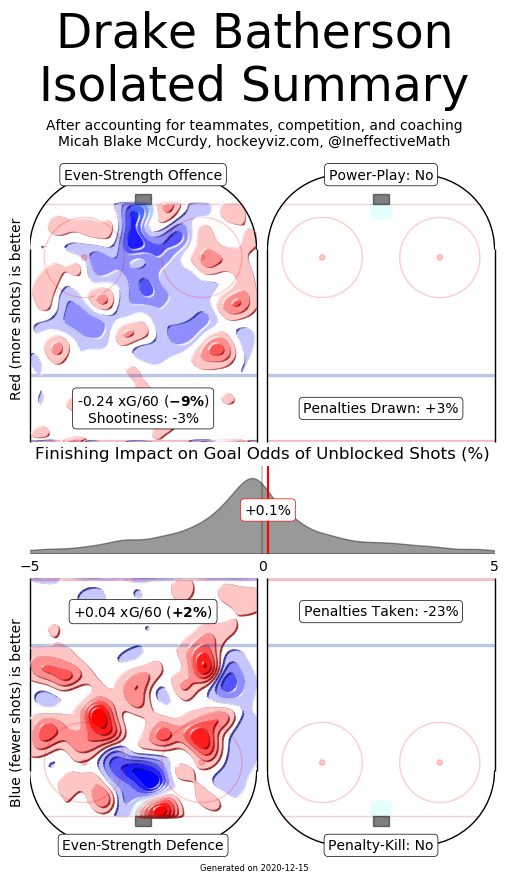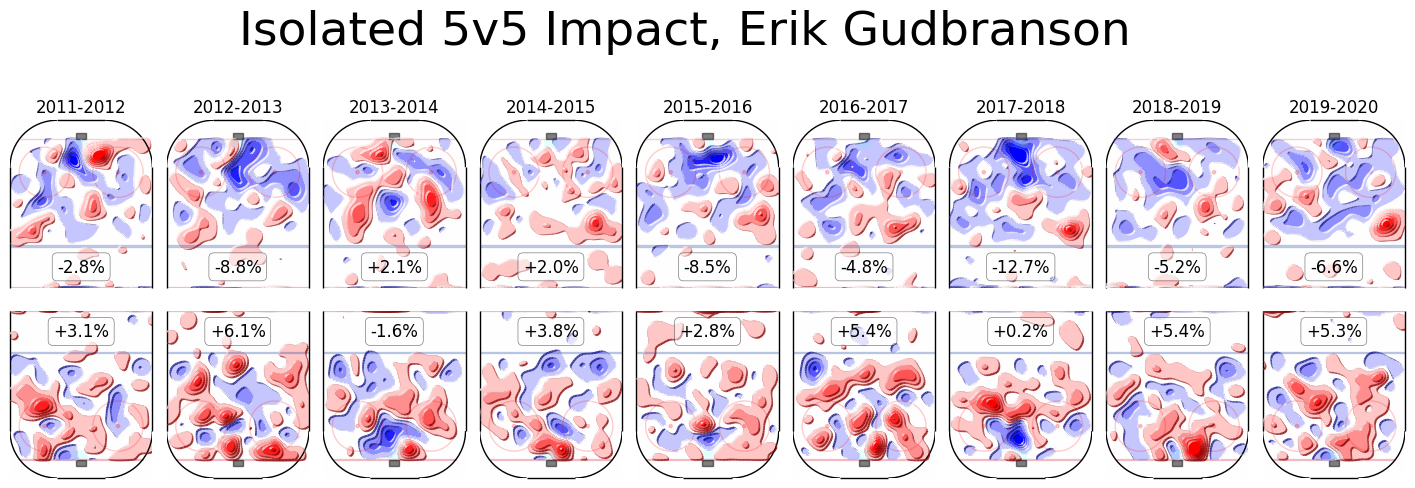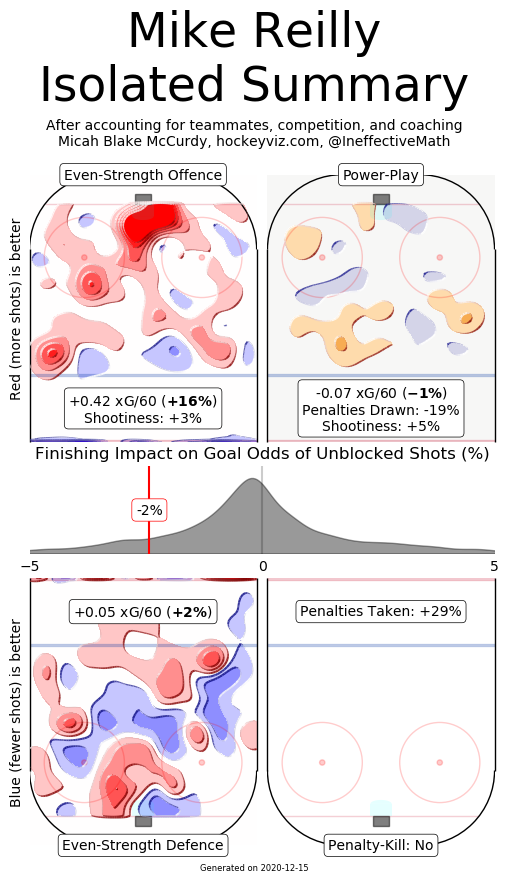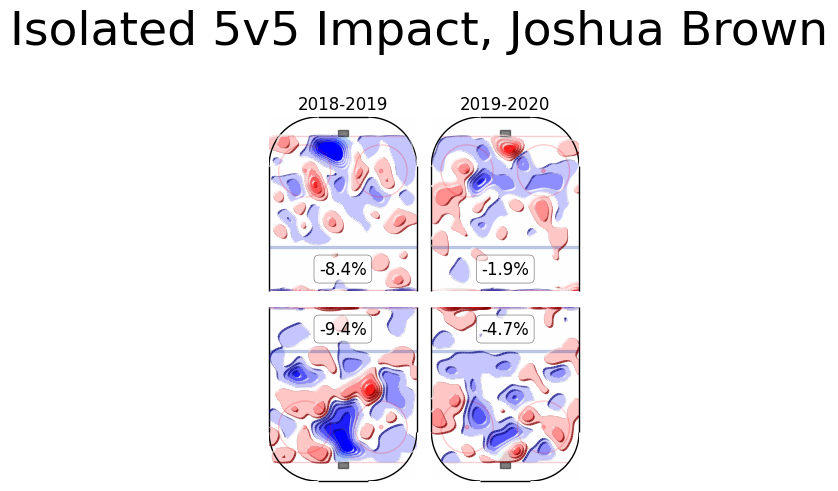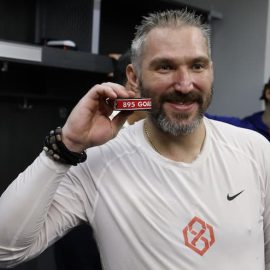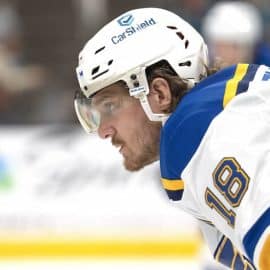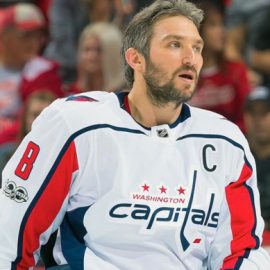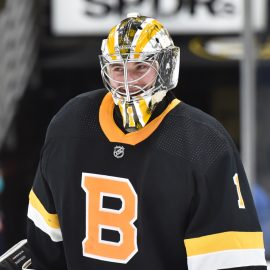The last time the Ottawa Senators played a game was March 11, 2020. When the puck drops on the Senators’ season at the Canadian Tire Centre on January 15th, it will be 311 days since the Senators last played.
It may feel like an eternity, but for those of you who were too young to experience and endure an Alexei Yashin holdout, we are not even 60-percent of the way through Yashin’s 528-day pout-fest.
A lot of time has passed however and a lot has changed.
New jerseys, new faces, shiny new prospects and playing a shortened 56-game campaign in a realigned NHL.
The landscape has changed considerably and in terms of anticipation, the Senators’ 2020-21 season is a melting pot of intrigue.
Without further ado, here is your season preview of this season’s 2020-21 Ottawa Senators.
The Standings
NHL parity has always helped teams exceed expectations, especially over small samples, but no one seems to be gripped by the possibilities for where the Senators can finish in the standings.
Even their staunchest supporters will recognize that this probably isn’t going to be Ottawa’s year. In an interview with Bob McCown earlier this offseason, even owner Eugene Melnyk – a projector of bravado — acknowledged that while he hopes the team is competitive, they are likely a year away from vying for a playoff spot.
The competition is going to be fierce.
While the Senators are starting to see the light at the end of the tunnel, the rest of the division has more realistic playoff aspirations.
Some statistical models have not been particularly flattering in their projections of where the Senators will place.
Updated 56-game standings projections for the 2020-21 season based on my WAR Roster Builder: pic.twitter.com/iGIT2d5aCi
— JFresh (@JFreshHockey) December 9, 2020
Four teams from each of the league’s realigned divisions will advance to the postseason. Although the expectations are that Ottawa will not be one of those teams, that does not mean that this season will be a waste.
The opportunity to add another prized lottery pick in this year’s draft will be welcomed.
The organization has already received plaudits for its stockpiled depth, but adding some of that desirable high-end skill is going to be incredibly important for this team’s future success. Assuming many of the team’s best young players will cycled into the lineup and get an opportunity to play, the learning experience that these young players will receive should help their development. It is one thing to play NHL games, it is another to play against good NHL teams on a nightly basis when the stakes are high. In this compressed NHL season with only four playoff spots available, every game has implications.
And if the stakes were not high enough, one of the quirks of this season’s schedule is that in an effort to minimize travel and exposures, the schedule resembles a baseball one. It is not uncommon for the Senators to play two, three or sometimes even four games consecutively against the same opponent. The potential for mayhem and bad blood is going to be off the charts. I have often written about how amazing it will eventually be to watch Brady Tkachuk irritate the opposition in a playoff series, but this season and its scheduling may be the next best thing. Every game will make for must-see television.
To expose Ottawa’s young prospects to this high level of competition, it cannot hurt. Granted, concerns for player development may arise if the losing becomes systemic, but I think there are enough insulating placeholders to safeguard the prospects if the team simply isn’t competitive.
The Shifting of Expectations: the coaching staff
After finishing 30th, 31st and 30th in the league in the last three seasons, suggesting that there is pressure on this organization may seem odd.
It may sound bizarre because in what should be a competitive North Division in the league’s new realigned world, the Senators are still expected to finish at the bottom.
https://twitter.com/CudmoreColin/status/1349007457151037444
So why would there be any added pressures on a team that seems destined to land another lottery pick in 2021?
The easy work is done. The roster was gutted. A few young building blocks are in place and with a number of prospects on the cusp of becoming NHL regulars, we can finally start to see the light at the end of the tunnel.
As that light draws nearer however, player development and smart transactions to supplement the young core will be paramount.
Second-year coach DJ Smith will play a pivotal role trying to balance the integration of the young kids into his lineup with putting a competitive roster on the ice.
Eventually as this rebuild progresses, the expectation for improved results is going to grow.
Looking at the organization’s recent history, it is hard not to notice a trend. Whenever expectations aren’t met and someone is held responsible, the coaching staff pays the price.
Since Craig Hartsburg was fired in 2009, if you look at the list of names, every single one of them experienced success early on when there were no expectations. Cory Clouston, Paul MacLean, Dave Cameron and Guy Boucher were all praised for in their first seasons with the Senators.
Smith drew rave reviews from management after first season behind the bench. Barring something cataclysmic where the team isn’t competitive and the prospects flounder, I certainly don’t believe there is any chance that Smith’s job would ever be in jeopardy in 2021. With that said however, there are some interesting dynamics at play. Expectations will continue to grow and Smith did raise headlines during the offseason when the coaching staff appealed to the league for relief after the organization gave the staff a 50-percent pay cut.
The Shifting of Expectations: Ownership
To successfully transition out of this rebuild, there are going to be pressures on management and ownership not to undermine the efforts of the past few years.
During the rebuild, Eugene Melnyk took a noticeable step out of the limelight. Blame the fallout from his NHL 100 Classic media availability, blame his distrust of the local media and the belief that they have contributed to this fan base’s declining consumer confidence.
Things are starting to change, however.
The Senators’ owner has launched his own website. Thanks to a certain “bush league” reporter deciding to move on from the team’s radio broadcast partner, there is even a chance that the mercurial owner will even return to participate in local radio interviews.
As his team naturally improves with the progression of its youngest players, it feels safe to assume Melnyk will continue to emerge from his hibernation.
Like any fan base, there are going to be people who simply will love this team unconditionally and support them through its ups and downs. For others, ownership is going to have to earn their trust back.
For Melnyk to publicly brag about his willingness to spend to the cap ceiling (starting in 2021) to help spur five years of “unparalleled success” when times are bad, he had better back up his bravado with action when the time comes.
Most everyone understands that the financial effects of the pandemic are real, but fans aren’t stupid. They understand the circumstances, but will not stand for intellectual dishonesty.
In the past, Melnyk has made mention of the fact that Ottawa’s cap hit has been in the middle-ground of the league, but there’s a difference between a cap hit and what is actually spent on real dollars on salary.
The Senators’ roster has a cap hit of approximately $70.6 million on per CapFriendly.com but their roster only costs an estimated $57.4 million in real dollars.
Melnyk promised to start opening the pocketbook in 2021 and he better follow through. This gap between the cap hit and the real dollars being spent has to shrink.
The Shifting of Expectations: Management
Like I mentioned earlier, Pierre Dorion’s easiest work is done.
It does not require an inordinate amount of skill to gut a roster, but it’s going to fall on Dorion to supplement the young core that he has worked hard to cultivate.
In his first steps towards putting forth a more competitive team, Dorion allocated $18.3 million in real dollars and $27.65 million in cap dollars to address some of the leadership and character voids that were created through his rebuilding efforts. Dorion’s offseason was a pretty polarizing one in the sense that while he added a mix of veterans to his roster and tried to fill some holes, he may not have made the Senators significantly better despite the money invested in these players.
With the off-season slowing down, a look at which teams got better or worse on paper and by how much: https://t.co/9537A1O7yJ pic.twitter.com/0KH5kLCCwF
— dom 📈 (@domluszczyszyn) October 21, 2020
His biggest splurges involved the acquisitions of Matt Murray and Evgeni Dadonov.
I will delve into each of these transactions later, but Dorion has committed some significant money and term to two players. The rest of his spending was allocated towards one-year commitments to players like Derek Stepan, Cedric Paquette, Erik Gudbranson, Braydon Coburn and Alex Galchenyuk.
It is still a transition period for the roster and many of these aforementioned players should strictly be viewed under the lens that they are placeholders. Management believed that the abbreviated 56-game North Division schedule necessitated insulating a number of the team’s young players with veterans who simply are not that good.
Fans can haggle over the price paid for a short-term asset like Stepan, but most of these rentals were acquired for a song. There is definitely a conversation to be had regarding the NHL’s conventional belief that it’s easier to give playing time and lose with proven underperforming veterans than it is to roll the dice on younger prospects, but the reality of Ottawa’s situation is that they’re still likely a year away from making any kind of noise in the standings.
Which means that there is going to be a lot of pressure on Dorion moving forward to start augmenting his roster with higher caliber talent.
And that brings me to…
Avoiding Trap Trades
If there is one thing that is certain regarding the Senators’ general manager, it is that Pierre Dorion loves to make deals.
Earlier this offseason, I already highlighted the importance of the Senators finding a long-term solution for their first-line centre role.
Tim Stützle will begin the season insulated playing the wing on the team’s second line alongside two veterans in Derek Stepan and Evgeni Dadonov. At some point this season, he may get the opportunity to play down the middle. If there are any reservations about his ability to play the position and fill that role, it will force the team to look outside the organization for a solution.
One of the solutions I suggested was for the Senators to consider Columbus’ Pierre-Luc Dubois, but now there are rumblings that teams are calling the Florida Panthers on Aleksander Barkov.
Opportunities may present themselves and in looking at the amount of prospects and draft capital that the Senators have stockpiled over the past two and a half years, Pierre Dorion should have the flexibility to make a splash should he choose.
The Senators are armed with a ton of trade capital and it’s probably only a matter of time before Dorion uses it.
The general manager has already flipped a pair of second-round picks to acquire Derek Stepan and Matt Murray this offseason, but it would not be surprising to see Dorion continue to use some of these future assets to improve the team’s short-term competitiveness.
The trap that the organization does not want to fall into is a familiar one. Too often in the past, the team has traded away significant opportunity costs in deals that were intended to make the team better but failed to do so.
No one needs revisionist history to recognize a lot of Ottawa’s biggest mistakes in recent years came when the team was trying to preserve competitiveness, improve the team’s PR or make a concerted effort to save money. And often these moves were made while ignoring a mountain of evidence suggesting that a player’s best years were behind him or that the timing of the deal for the where the franchise was in its development curve was just totally wrong. (Or both.)
Rumours of Melnyk’s liquidity and financial stability have dogged the owner for some time, but if they are true, the cash situation and the Senators’ pipeline — one of the most well-regarded ones in the league — should afford Dorion the flexibility to be patient with the youth movement.
The question is will he?
Whether it was Dorion or Bryan Murray running the ship, the prevailing sentiments when trying to evaluate the performance of the general manager was one of empathy. A lot of people are forgiving simply because of the preconceived ideas of what it must be like having to work for one of the most volatile owners in professional sports.
Nobody envies what Dorion may have to endure, but working under Eugene should never preclude a manager from making the best and most-informed decisions.
There is certainly a lot of work to do.
Looking through Evolving-Hockey.com’s data, the Senators have not had a season with a positive shot share (CF%) and a shots on goal share (SF%) greater than 50-percent since the 2012-13 campaign (53.81 CF%, 52.27 SF%). Over the past 10 seasons, the team has only enjoyed two in which it had an expected goal share greater than 50-percent.
The Senators have spent a disproportionate amount of time at five-on-five playing in their own end without the puck and that probably is not going to change this season, but whether it is this season or the offseason, it would not be a surprise to see Dorion cash in on some of his young assets.
Whether he does that efficiently remains to be seen, but there’s going to be a significant amount of pressure on him to start making smart hockey deals that make this team significantly better.
Introducing Timmy Ümlaut & A Look at Ottawa’s Second Line
On his 19th birthday, German phenom Tim Stützle will make his debut for the Senators tonight against the Toronto Maple Leafs.
Without question, he is the most highly anticipated prospect to make his Senators debut since Jason Spezza suited up on October 24, 2002.
Stützle will get an opportunity to build upon the hype he created during the 2021 World Junior Championships where his five goals and 10 points in five games helped carry a short-manned German squad to the country’s first ever quarterfinal appearance. For his efforts, Stützle received accolades being named as one of his country’s top three players, being named to the WJC All-Star Team and being recognized as the tournament’s ‘Best Forward’.
In Ottawa, Stützle will get an opportunity to play in the team’s top-six where he’ll line up alongside veterans Derek Stepan and Evgeni Dadonov. It’s a soft-landing spot for the skilled playmaker and I am really looking forward to seeing what kind of chemistry he can develop with a finisher like Dadonov.
When you watch every goal from Evgeni Dadonov’s 2019-20 campaign, a few things really stand out.
https://www.youtube.com/ibvpKS3JxjI
Not only did he really benefit from Jonathan Huberdeau’s playmaking ability, Dadonov was electric from the bumper position.
After the Senators announced the Dadonov signing, it was not uncommon to see some concern expressed acknowledging that he’s an older player who benefited from playing with two really good players in Aleksander Barkov and Huberdeau.
While true, he is going to play with an exceptional playmaker and talent in Tim Stützle. I have a lot of high praise for the teenager and hopefully he does not place too much pressure on himself, but it should be a lot of fun watching these two talents play off one another. And as the season goes on, I’m also looking forward to the possibility of watching Stützle potentially slide over to the centre position as he grows more confident and accustomed to the league.
Admittedly, I was down on the Senators’ decision to send a valuable future asset, a second-round pick, for Derek Stepan when the Arizona Coyotes were in a cap crunch and the Senators would seemingly have all the leverage in trade negotiations. As an impending unrestricted free agent this summer, it’s a high price to pay for a cap casualty and rental. With that said, slotting Stepan between these two skilled players could create an opportunity for the Senators to pump the veteran centre’s value before dealing him at the deadline.
As one of the few teams in the league who should recognize their unrealistic playoff aspirations, the Senators have an advantage over their competitors in the sense that they can leverage their situation. As a team that should be a seller, they have the opportunity to set the market early and take advantage of teams having to aggressively buy earlier on the account of the quarantine restrictions.
Brady Tkachuk’s Contract Negotiations
One of the biggest stories of the season will take place off the ice.
Brady Tkachuk is in the last year of his entry-level contract and will become a restricted free agent this summer.
In Ottawa, it often feels like there is a hypersensitivity to contracts after players like Mark Stone, Erik Karlsson, Kyle Turris moved on as the team failed to come to terms with these players. In recent years, the organization has made a big deal out of the contract extension announcements of players like Thomas Chabot and Colin White.
There is certainly a false equivalency when it comes to comparing a team’s ability to sign their own unrestricted free agent eligible players than young assets that the team still has the rights to.
Tkachuk’s case is interesting because there seems to be a growing belief that Brady will follow the path of his brother and pursue a short bridge deal with the Senators. In September of 2019, Matthew signed a three-year contract with the Flames for an average annual value of $7.0 million.
Last fall The Athletic’s Dom Luszczyszyn wrote about the NHL’s best contracts and it was hard not to notice that most of the deals that he listed were signed by young players coming off an entry-level deal like Boston’s David Pastrnak.
With what we know about aging curves and an NHL player’s prime offensive years (22-27 years of age), it makes for young players to continue betting on themselves with short-term deals than sign some lengthy extension that may leave money on the table down the road.
There is a lack of appetite for throwing around offer sheets for the purpose of acquiring a player or inflating the cost of a competitor’s young talent, but there is a palpable unease when it comes to discussing a contract extension for Brady Tkachuk.
Which is weird because there simply isn’t available or tangible proof indicating that there is a reluctance on the part of the player to sign an extension that buys the first few years of unrestricted free agency.
Speaking of Brady…
The ‘Chuk Norris’ Line
With Tim Stützle garnering all of the attention and hype, it is easy to look past the fact that Josh Norris and Drake Batherson are getting an opportunity to step into the limelight and play alongside Brady Tkachuk on what should affectionately be referred to as the ‘Chuk Norris’ line.
Everyone on this kid line is under the age of 23.
Tkachuk’s already had two extremely impressive NHL seasons under his belt and his blend of leadership, physicality and charisma has already made him one of the most popular players in the franchise’s modern history.
After an exceptional first professional season in the AHL that saw him lead all rookies in scoring and finish top-five in league scoring, Josh Norris slides into a pretty significant role for opening night.
There is some familiarity between Tkachuk and Norris though.
Not only are they roommates, but good friends who spent time together within the US development program. This comfort factor will hopefully allow Norris to relax and not put too much pressure on himself.
Heading into training camp, it seemed reasonable to assume that the organization would insulate some of the younger players. Norris only has three NHL games under his belt and Drake Batherson struggled in his 23 games last season scoring three goals and adding seven assists.
For an offensively-inclined player who isn’t renowned for his play away from the puck, he struggled to generate offence.
From Hockeyviz.com:
Batherson is going to get the opportunity to play with a significantly better player in Tkachuk and if there’s one thing to glean from Tkachuk’s short time as a pro, he does a good job of insulating and making the players around him better.
What version of Matt Murray are we getting?
The story on Matt Murray isn’t a secret.
After some wildly successful first couple of seasons in the league that saw Matt Murray win two Stanley Cups with the Pittsburgh Penguins, Murray came over to the Senators in a trade following a disastrous 2019-20 season.
According to Evolving-Hockey.com’s data, only five goalies allowed more goals than expected last season than Matt Murray (-13.98).
It is easy to understand why the Senators targeted Murray.
At just 26 years of age, he is a young enough player to augment this team’s young core. And having already won two championships, he not only has experienced high pressure hockey, but he’s had success doing it.
The hope is that this fresh start in Ottawa gives Murray a chance to return to the play he exhibited earlier in his career.
Playing behind this defence is not going to be easy, however. Murray is going to face a lot of shots and a workload that he is probably unaccustomed to.
If he cannot return to his previous form and last season proves to be part of some larger decline, the risk is that the Senators will have committed a young asset and a sizable contract (four-years, $25 million, $6.25 AAV) to a goaltender at an interesting time. It is no secret that with the upcoming expansion draft, teams will be subject to protecting only one of their goaltenders, so the market will inevitably be saturated with alternatives.
In rolling the dice on Murray now, it will open the Senators up to some second-guessing if he does not get the job done.
The State of the Blue Line…
Thomas Chabot is the quiet and unassuming rock star on defence and that is not going to change.
What needs to change is the talent level of the defencemen around him. Make no mistake, there are some really intriguing blue line prospects coming through the ranks. Prospects like Jake Sanderson and Jacob Bernard-Docker should have an opportunity to play professional games later this year. Unfortunately, it is going to take time for this team’s prospects to not only step into the lineup, but become the difference makers that this organization sorely needs.
After spending most of last season anchored to Ron Hainsey and Nikita Zaitsev, the good news is that Thomas Chabot will start the season with a new defensive partner. From an analytics perspective, moving on from two of the worst statistical defencemen in the league should be a welcomed thing, but Erik Gudbranson is going to get the first opportunity to play on Ottawa’s top pair.
Gudbranson is the Senators’ answer to losing Mark Borowiecki.
As great as it is to add a charismatic and engaging local player who is renowned for his intangibles, Gudbranson is another defenceman who does not look good by any advanced metric.
With Zaitsev sliding to the second pairing, Christian Wolanin will start the season as his partner. It was an unexpected change. Heading into camp, I simply assumed that the Senators would allow Wolanin the opportunity to get his feet wet before moving him up the depth chart. Wolanin missed all but three of last season’s games after he was forced to undergo shoulder surgery in September of 2019.
Beyond Chabot, he has the most offensive upside of anyone on the backend, but it will be interesting to see whether being anchored by Zaitsev will hurt Wolanin’s underlying numbers. Wolanin isn’t exactly renowned for his defensive abilities, so if Zaitsev continues to struggle creating turnovers and moving the puck efficiently, this pairing could spend a lot of time within its own end defending.
The third pairing could be a revolving door between Mike Reilly and Braydon Coburn on the left side and Josh Brown on the right side. The Senators’ depth chart is loaded with puckmovers on the left side, so Coburn gives it an element that it lacks. At 35 years of age however, his best years are behind him and he’s simply a candidate to be moved later in the season.
Like Wolanin, Reilly possesses some puck-moving talent and in his 30 games for the Senators last season, he did so relatively effectively.
Unfortunately, there are some shortcomings on the defensive side of the puck that may cost him some games with the presence of a guy like Coburn around.
With the exception of Wolanin, the one defenceman who I am interested in watching play is Josh Brown. The right defenceman was acquired earlier in the summer from the Florida Panthers for a fourth-round pick in the 2020 NHL Draft.
Although he does not bring much to the table offensively in terms of point production or shot generation, he appears to have a positive isolated impact on shot suppression in the defensive zone.
For a team that has historically struggled with that in recent years, I wonder if it’s a function of playing sheltered minutes or whether maybe there’s more upside to Josh Brown’s game than we realize.
If he can start off the season well, there should be an opportunity to move up the depth chart because the alternatives aren’t particularly strong.
The one wild card to the Senators’ blue line picture is Erik Brannstrom. After having a strong start to his season overseas, Brannstrom came into contact with someone who had Covid and it forced him to go into quarantine. It is easy to feel for a prospect who may have lost a real opportunity to push for a spot in camp, but his ability to play the left and right side may allow him to be recalled by the organization sooner than we think.
The organization has expressed their preference for Brannstrom to play on his natural left side, but if the Senators’ right-side struggles to move the puck and spends too much time within their end defending, Brannstrom could get the call.
If injuries and ineffectiveness don’t beset some of the veterans ahead of him however, it would hardly be a surprise to see the Senators dangle him as trade bait as part of a larger package to land a quality player. With Chabot entrenched and the Senators’ selection of Jake Sanderson with the fifth overall selection in the draft, if Brannstrom is to play the left side, he may have more value as a trade chip than to play third pairing minutes for the Senators down the road.
Time to prove it: Logan Brown and Colin White
Obviously, there has been a lot of discussion regarding the organization’s decision to return Logan Brown to the AHL before the start of the season. Together with DJ Smith electing to bench Colin White for the first game of the season, a lot of eyebrows have been raised.
It is important to point out that in the greater scheme of things, unless Matt O’Connor is starting the team’s home opener, there’s really no sense overanalyzing the lineup decisions for one game. For a player like Colin White, who was played in 132 combined games over the last two seasons, it has to be embarrassing for the player.
At least in Brown’s case, Dorion explained that he was close to making the team, but the team simply wanted to have him play games in the AHL than toil on the team’s taxi squad. This is understandable given how many games Brown has missed over the course of his young career. He hasn’t played close to a full season’s worth of games since his 2015-16 junior season.
I don’t know whether Smith is sending a message to Colin White or it is simply a matter of the organization preferring to dress a prototypical fourth line at the expense of a much more talented player.
It is one thing to want to reward Anisimov for showing up to camp 10 lbs lighter, but even though he scored 15 goals last season (on the strength of 17.2 shooting that is due for some regression), he is a 32-year old centre who’s on the last year of his contract and was one of the league’s least valuable players last season.
Of all the forwards who played games last season, only 28 forwards were less valuable to their team than Anisimov according to Evolving-Hockey‘s ‘wins above replacement’ (WAR) metric.
I realize that the Senators want to prove that they won’t be pushed around and they want to be identified as a tough team that plays hard, but Austin Watson and Cedric Paquette are both sub-replacement level players. They may be physical and hard to play against in one sense, but if the Senators are always defending in their own end without the puck, are they not pretty easy to play against under a totally different lens?
I feel for White because he was a first-round pick and it’s clear that people have higher expectations of him because of where he was drafted.
In his first season playing alongside Tkachuk and Mark Stone, the offence played up and I had suspicions that once better offensive talent arrived and would subsequently push White down the depth chart, his production would take a hit. It was this rationale that made me argue that the Senators would be wise to push for a bridge contract with White. They didn’t and signed him to a long-term contract in part to show to fans that players wanted to be here – even though White didn’t have any leverage to go anywhere as a restricted free agent.
The whole thing was preposterous, but it seems like people hold his draft position and contract over him. Like it’s his fault that he’s simply a safely projectable third line player who has some modest upside.
Like Brown, you have to wonder where White’s future lies. If spots aren’t opened up for these young players, it’s hard to imagine either of them being part of this team’s long-term plans. Ultimately, it is not hard to envision Brown leaving the Senators as part of a trade package (maybe alongside Erik Brannstrom perhaps?). Brown probably has more trade value simply because he has more offensive upside and does not have White’s contract attached to him.
With White, maybe the Senators try and move him at some point for another struggling young player who is on a questionable contract. If that move cannot be made however, he’ll likely be exposed in the expansion draft or be bought out at one-third of the remainder of his contract’s value like Ray Emery was years ago because he’s younger than 26.
Add The Sports Daily to your Google News Feed!
